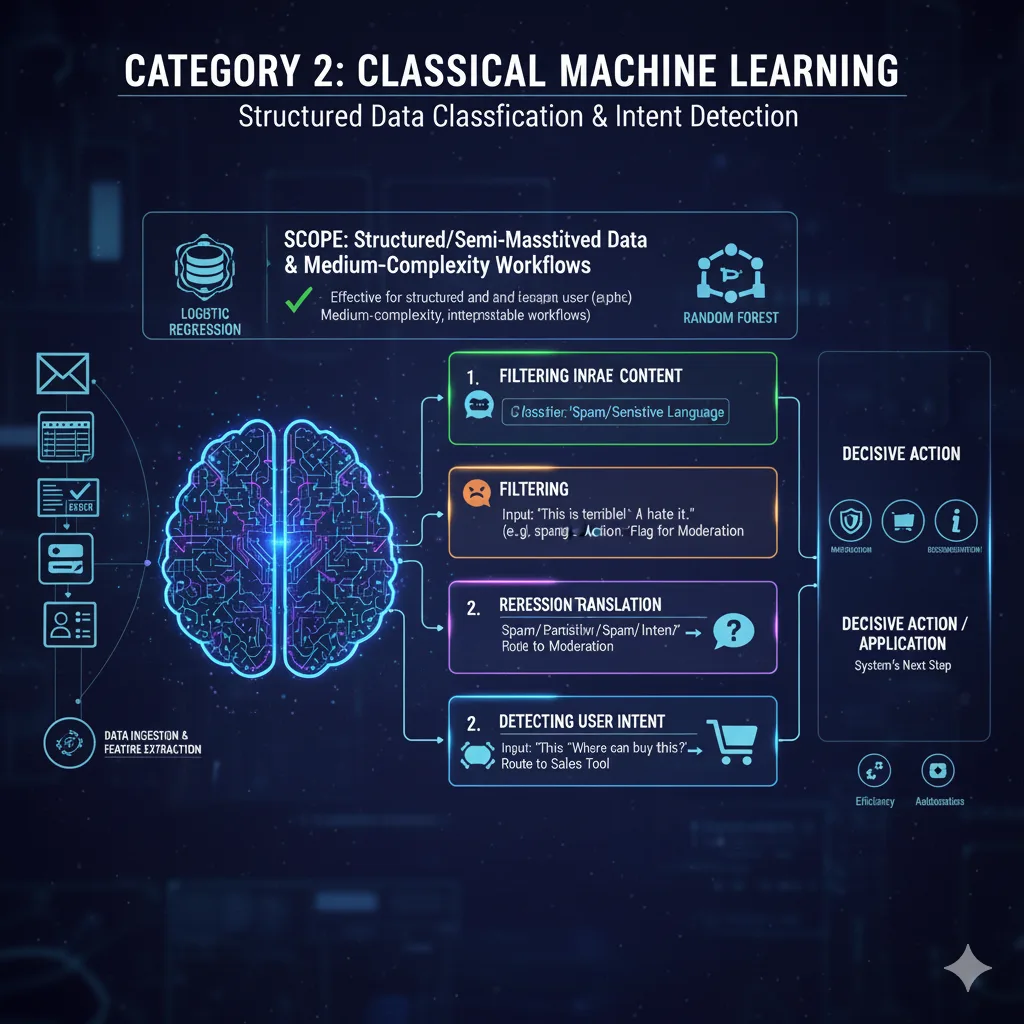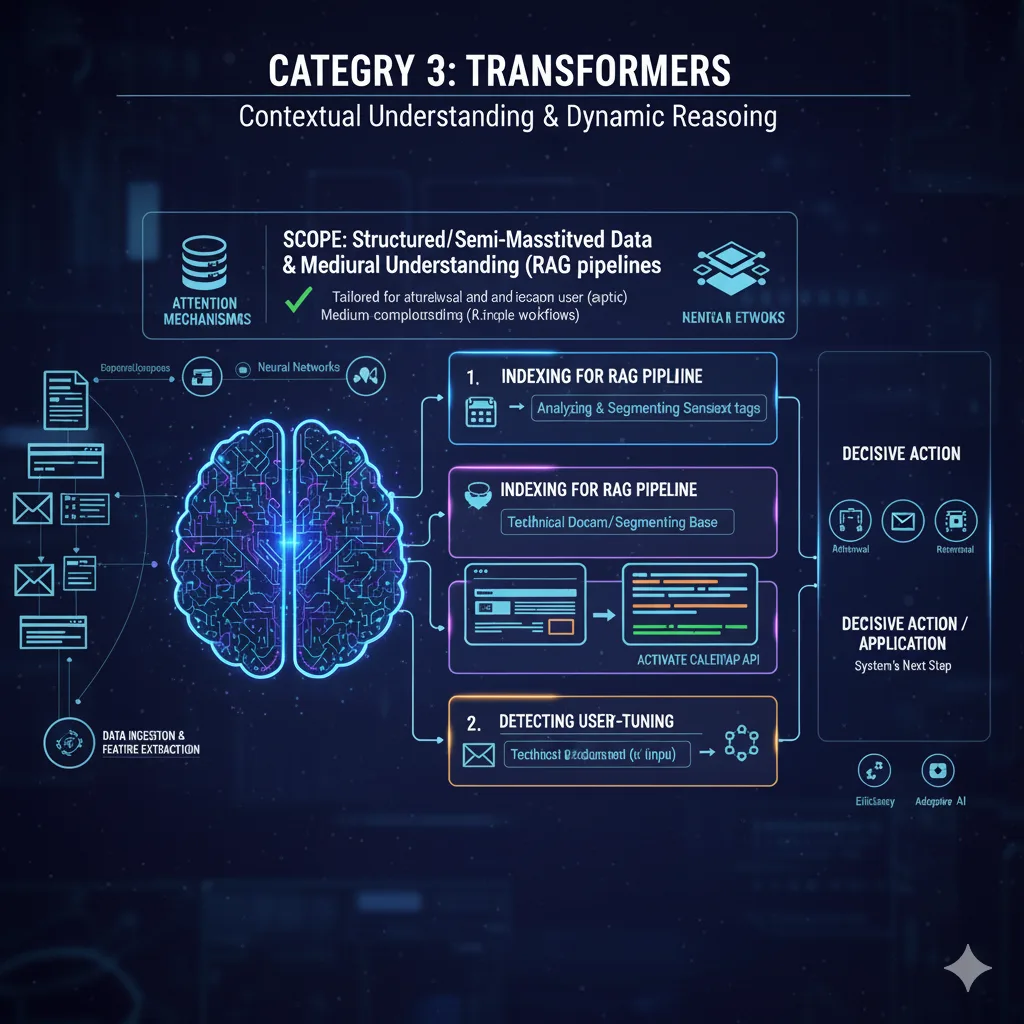Smart classifiers: Bridging data, context, and action in AI systems
I. The three categories of smart classifiers
A classifier’s fundamental mechanism is simple. It takes an input, such as a piece of text or a dataset, and assigns it a predefined label. This label immediately dictates the system’s next step. The quality of the classification directly determines the system’s utility and efficiency. By acting as the nervous system of an AI agent, classifiers ensure seamless integration between data ingestion, contextual awareness, and decisive action. This mastery is vital for building truly autonomous and valuable AI systems.
1. Category 1: NLP algorithms
This foundational category includes efficient libraries such as SpaCy and Scikit-learn. These algorithms excel at tasks requiring minimal contextual memory or reasoning.
Scope:
These models are ideal for creating simple keyword-based triggers. They are best suited for lightweight, low-context tasks. This includes rapidly sorting short, independent text snippets.
- ✅ Ideal for creating keywords to trigger tools or actions in an AI agent.
- ✅ Best suited for lightweight, low-context tasks like sorting short, independent text snippets.

Examples:
Classifying email subjects into categories like “Billing” or “Technical Support” to trigger specific workflows.
Triggering tools based on keywords
Detecting phrases like “schedule a meeting” in a chat and activating a calendar API in an AI agent.
Sorting short text snippets for independent actions
2. Category 2: Classical Machine Learning
Examples: Logistic Regression, Random Forest
Scope:
- ✅ Effective for structured and semi-structured data, such as filtering spam or clustering user intents.
- ✅ Excellent for medium-complexity workflows where interpretability and robustness are key.

Examples:
- Filtering inappropriate content
- Identifying spam or sensitive language in user submissions and flagging it for moderation.
- Detecting user intent
- Recognizing whether a query expresses “purchase intent” or a “product inquiry” and routing it to the appropriate tool.
The strategic stakes center on compliance and resource allocation. Interpretable models provide clear explanations for their decisions. This feature is essential for auditing and regulatory compliance. For instance, classical classifiers efficiently filter inappropriate content. They identify spam or sensitive language in user submissions and flag it for moderation. Another critical business case involves detecting user intent. Recognizing whether a query expresses “purchase intent” or a “product inquiry” allows for accurate routing.
3. Category 3: Transformers
Examples: ModernBERT, Small Language Models (<50B), Large Language Models (>50B)
Scope:
- ✅ Tailored for contextual understanding and reasoning, making them perfect for Retrieval-Augmented Generation (RAG) pipelines.
- ✅ Ideal for dynamic prompt-tuning, adapting responses to user input or task requirements in real-time.

Examples:
- Indexing information into a RAG pipeline
- Analyzing a technical document and associating each segment with the correct context for retrieval during user queries.
- Dynamic prompt-tuning
- Modifying an AI model’s responses based on user tone or customizing prompts for specialized tasks.
II. Key takeaways
By systematically classifying smart classifiers into NLP algorithms, classical machine learning models, and transformers, we establish a clear framework for selecting the right tool for the job. This structured approach simplifies application and ensures optimal alignment with real-world tasks. Whether the need is for rapid, lightweight keyword triggers, robustness in medium-complexity data filtering, or achieving deep contextual understanding and reasoning, smart classifiers form the essential backbone of adaptable, intelligent AI systems.
